Go Green and Save Green With Solar Incentives
We’ve all heard that there are incentives for getting a solar array for your house. But what exactly are they? We’ve gathered up a few of the major incentives in the states we operate in, so you know what the benefits are for purchasing a solar installation.
(Disclaimer: This material has been prepared for informational purposes only, and is not intended to provide, and should not be relied on for, tax, legal, or accounting advice. You should consult your own tax, legal, and accounting advisors before engaging in any transaction.)
Federal
The federal residential solar energy credit is a tax credit, meaning it will reduce the amount of income tax that you owe them. A percentage of the cost of a solar photovoltaic (PV) system can be claimed on federal income taxes. Currently, you can get up to 26% of the solar PV price credited.

To be eligible:
- System is installed between 2020-2022 (in 2023 reduced to 22%, in 2024 onward there will be no tax credit unless Congress renews it)
- PV system is located in the United States at your primary or secondary residence
- You own the solar system (purchased with cash or financing, cannot be leasing it or buying electricity from a system you don’t own)
- This is the original installation of the solar array (the equipment is new or being used for the first time)
How other incentives affect this one:
- Electric utility rebate: If your utility company is giving you money to install solar, it’s most likely excluded from federal income taxes. This means that before you calculate your tax credit, you have to subtract the rebate from the system costs. For example, if you got a solar PV system right now, it cost $20,000, and you got a rebate of $1,000, your federal tax credit would be 0.26 x ($20,000 – $1,000) = $4,940.
- State rebate: This will most likely not reduce your federal tax credit. So with the same situation as above, but your state government is giving you a $1,000 rebate, your federal solar tax credit will be 0.26 x $20,000 = $5,200.
- Renewable energy certificates: When you are paid for a renewable energy certificate, whether by your utility company or another buyer, this payment is probably going to be considered taxable income. That means this payment will add to your gross income, but it won’t take away from the federal solar credit.
- State tax credit: The state and federal tax credits don’t mess directly with each other. However, the state credit will increase your taxable income for federal taxes, because you will have less state income tax to deduct. So with the same $20,000 solar system, and the solar federal tax credit of 26%, and say the federal income tax rate is 22% and the state tax credit is 25%… your total tax credit will be [$20,000 * 0.26] + [$20,000 * (1 – 0.22) * (0.25)] = $5,200 + $3,900 = $9,100.
How to claim your federal solar credit:
First, you’ll want to get professional tax advice to make sure you’re eligible. Then, you just need to complete and attach IRS Form 5695 to your federal tax return (Form 1040 or Form 1040NR)! Instructions on filling out the form are here.

When it comes to state incentives, you’ll have to look through them to find what fits you best and which ones you can overlap. Here are a few highlights for the states Arcadia operates in:
Arizona
According to the Database of State Incentives for Renewables & Efficiency® (DSIRE), there are 83 programs related to clean energy in Arizona. Arizona’s solar incentives are considered to be some of the best in America.
There’s the Residential Arizona Solar Tax Credit, which will give you back up to 25% of the cost of your solar panels. It will take up to $1,000 off your personal income tax for the year the system is installed.
The Solar Equipment Sales Tax Exemption frees you from paying any sales tax when you buy your solar system. The Energy Equipment Property Tax Exemption lets you keep the same property taxes even though you are adding value to your home with the installation of solar panels.
California
California’s net metering program allows solar homeowners to get bill credits from their utility company in exchange for their extra solar power. Check with your utility company to find out what solar incentives you might be able to get. There’s also a program called Disadvantaged Communities – Single-family Solar Homes (DAC-SASH) that is for customers of specific utility companies, which will give rebates up front to income-eligible, single-family homeowners for their solar panels.
Again, these are just a few examples of what’s available. Make sure to check the DSIRE page to see the rest of the 176 programs for clean energy that might be of use to you.
Nevada
Among the 59 programs that Nevada has is net metering, like California. The utility companies have different ways to credit you, but either way, you’re making money with your extra power. And considering how much sunshine Nevada gets, you’re sure to have extra.
In order to protect your right to install solar panels and generate electricity with them, Nevada also has solar access rights. These make sure that no legal document (such as homeowner’s association rules) can stop homeowners from getting a solar system.
Texas
It might not have statewide tax credits or rebates, but Texas still has great solar incentives. Plenty of cities and utility providers offer compensation like the ones mentioned for the previous states, such as payment for each kilowatt-hour your solar panels generate. The DSIRE page will help you find which of the 141 programs in Texas can help you out the most. From net metering to property tax exemptions to solar rights laws, there’s a multitude of ways to go solar with confidence.

Storage is another important part of a solar system, and there are battery solar incentives in many states. For example, NV Energy in Nevada offers a storage incentive of up to $3,000 if you are a homeowner adding a battery to your solar panel system. California has the Self-Generation Incentive Program (SGIP), with which the amount of the rebate depends on how many batteries are installed throughout the state as well as the size of the battery you get.
Taking advantage of incentives for solar power can seem complicated when you look at the huge amount of information out there. If you’re not a person who likes math, it’s even less fun! But we are always here to help if you have any questions. We want you to feel confident that when you get a solar array installed, you’re going to be benefitting in multiple ways. If you need assistance with any part of the solar installation process, please feel free to contact us at any time.
FREE CONSULTATION
Claim your basic human right to clean, affordable solar now. Schedule a free, no-pressure consultation with one of our experts.
